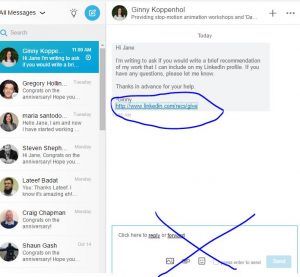
In your research on website design and online marketing, you will hear a lot about user engagement.
Increasing your user engagement is a way to encourage customer loyalty and to get more sales and brand exposure. The higher your customer engagement, the more successful your company is likely to be.
A lot of people who talk about user engagement equate it to the user experience, which is often a result of the website design. Yet user experience is NOT the same as user engagement.
Here’s what you need to know about the difference between user engagement and user experience and how the two affect your brand’s success:
User Experience
User experience encompasses a lot of the way you feel when you visit a site.
Do you find the site easy to use? Does the site seem fun and attractive? Do you find the site to be useful?
All of these elements are part of your user experience.
The user experience includes design elements and content. Typically, user experience includes four categories: Utility, usability, appeal and engagement.
Utility refers to how useful the site is. Does it have content that answers your questions? Does it provide value to you in some way? Then it has utility.
Usability refers to the ease of navigation on the site. Are you having a hard time finding the information that you need? Are you able to add items to your cart easily? A site with good usability should have easy navigation, and all the elements should be easy to use and should work the way they are intended.
Appeal refers to the look of the site. Is the design aesthetically pleasing? Is it free of annoying ads and pop-ups? If so, the site has good appeal and contributes to a positive user experience.
User engagement is part of the user experience, but it is not the same as the user experience. If the site offers a good user experience, it also engages the user.
User Engagement
Here’s an easy way to think about the difference between user experience and user engagement:
You may buy a lot of books from the bookstore (your experience), but do you actually read them (your engagement)?
You may attend a free class at the gym and sign up for a membership, but do you actually go after that initial introduction?
You may watch a lot of videos on a site, but do you ever comment on them or share them on your social media?
User engagement represents the purposeful choices you make with the content you see on a site. Engagement is how people get value from the user experience on the site.
Marketers can understand user engagement as the junction between getting a person’s attention and inspiring them to take action. The more engaged a user is, the more likely they are to return to the site and then to become ambassadors for your brand.
You can measure engagement in many ways. Some of the best ways are to look at how many of your visitors are return visitors and to look at how long they are staying on your site. The more return visitors you have and the longer people are staying on your site, the better the job you are doing at engaging your users.
On social media, user engagement can be measured in terms of likes, comments, shares and retweets.
If you are not getting the engagement you want, you can try out different types of content, different headline types, and different writing styles. Continue testing different strategies until you find methods that land.
If you run an ecommerce site, you’ll have to look at different metrics to measure user engagement. Specifically, you’ll want to look at conversion to purchase rates and CTA success percentages.
Using the Right Tools
Many tools are available to help you improve both the user experience of your site and the user engagement on it. Finding and using the right tools is key to your success.
Tools are available to help you increase the user experience on your site, such as apps that perform a site evaluation to determine slow-loading elements of your site or that let you know if aspects of your site architecture are missing. You can use tools that help you improve the navigation, optimize your images, and more.
Use all the tools at your disposal to improve your user experience and user engagement and start meeting your goals this year.
Business & Finance Articles on Business 2 Community(25)









